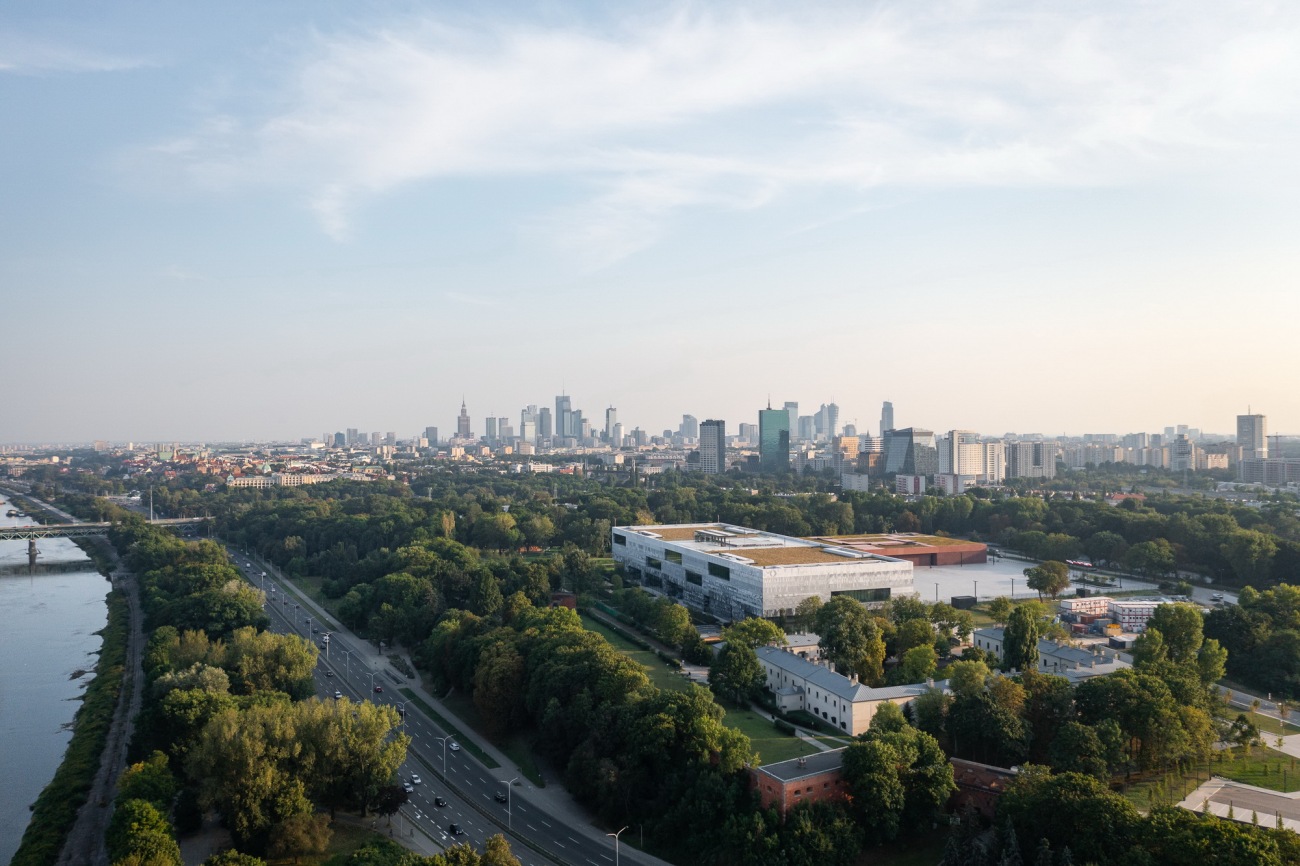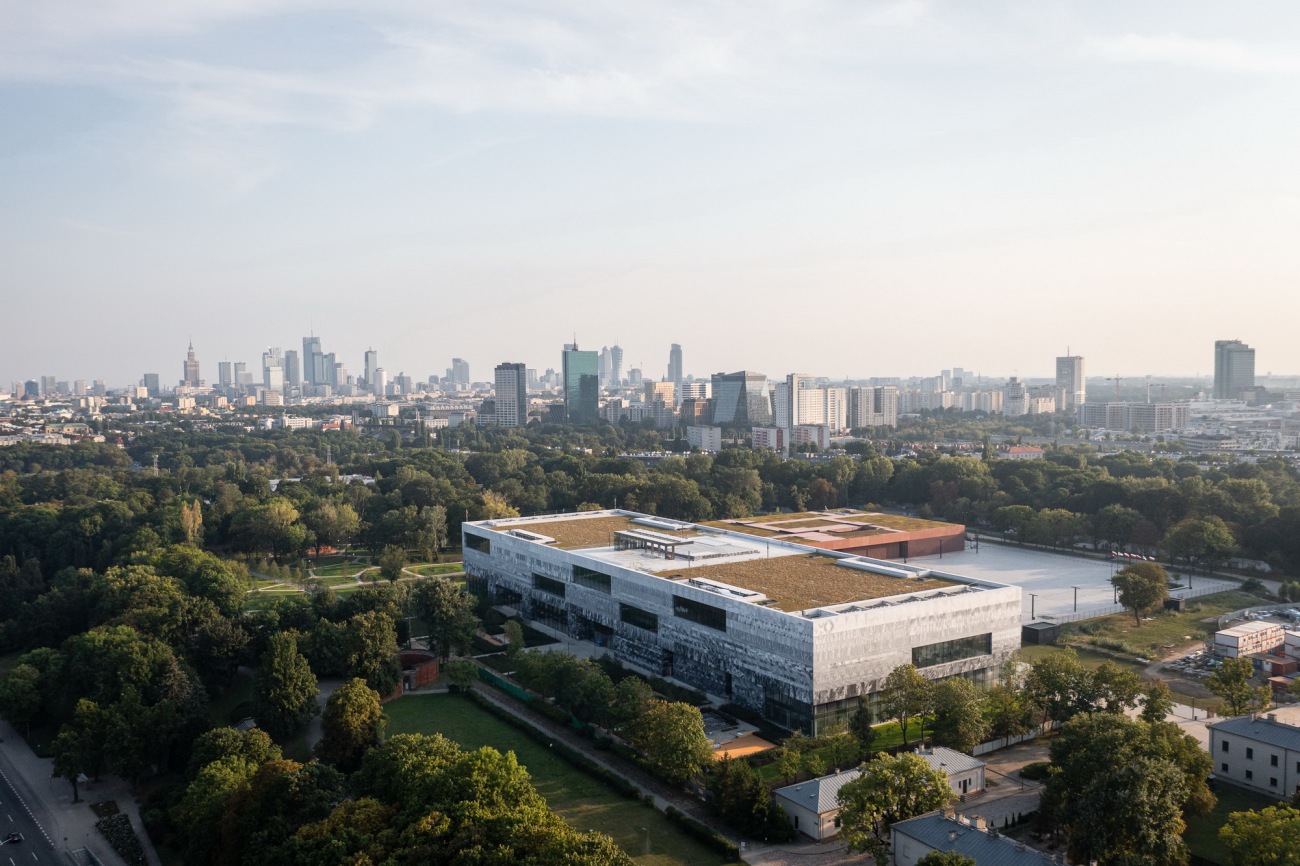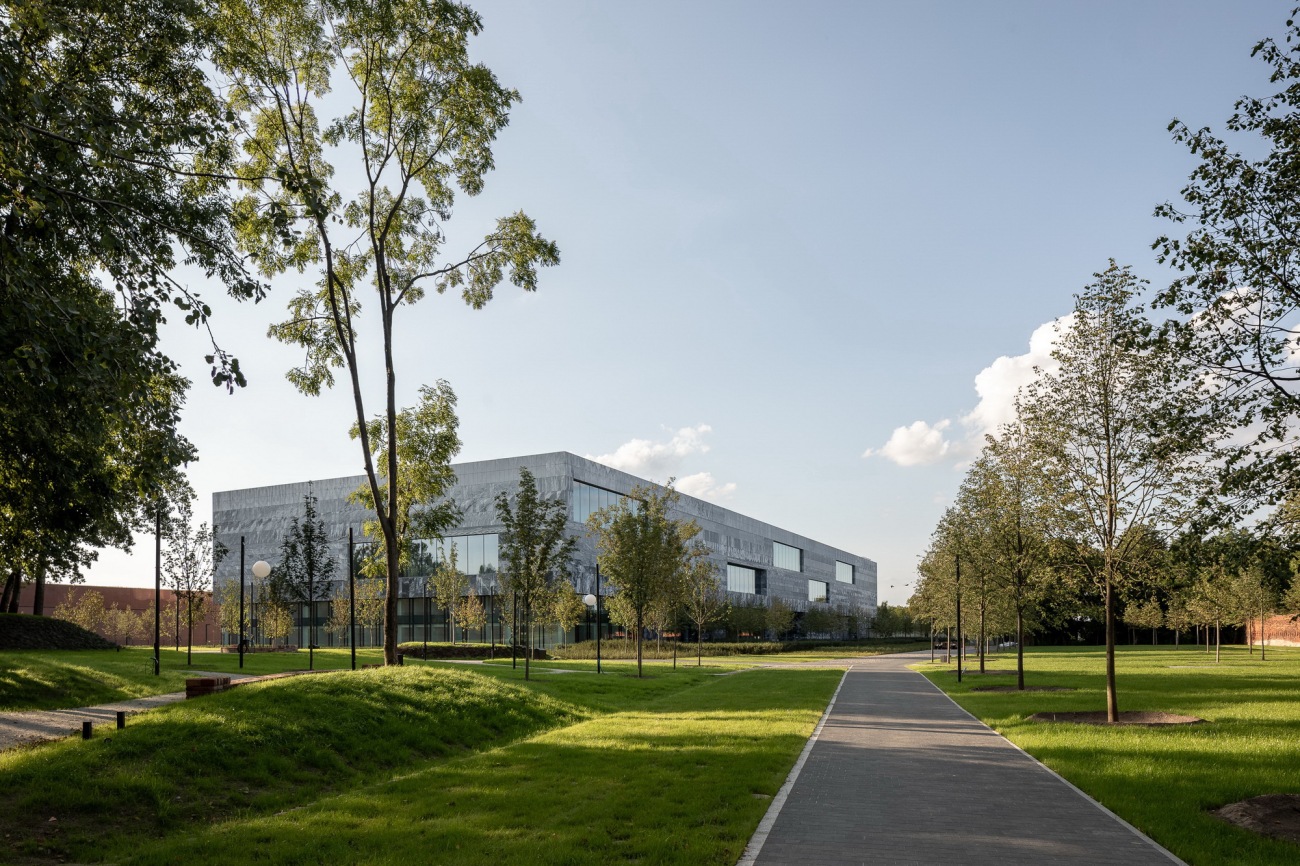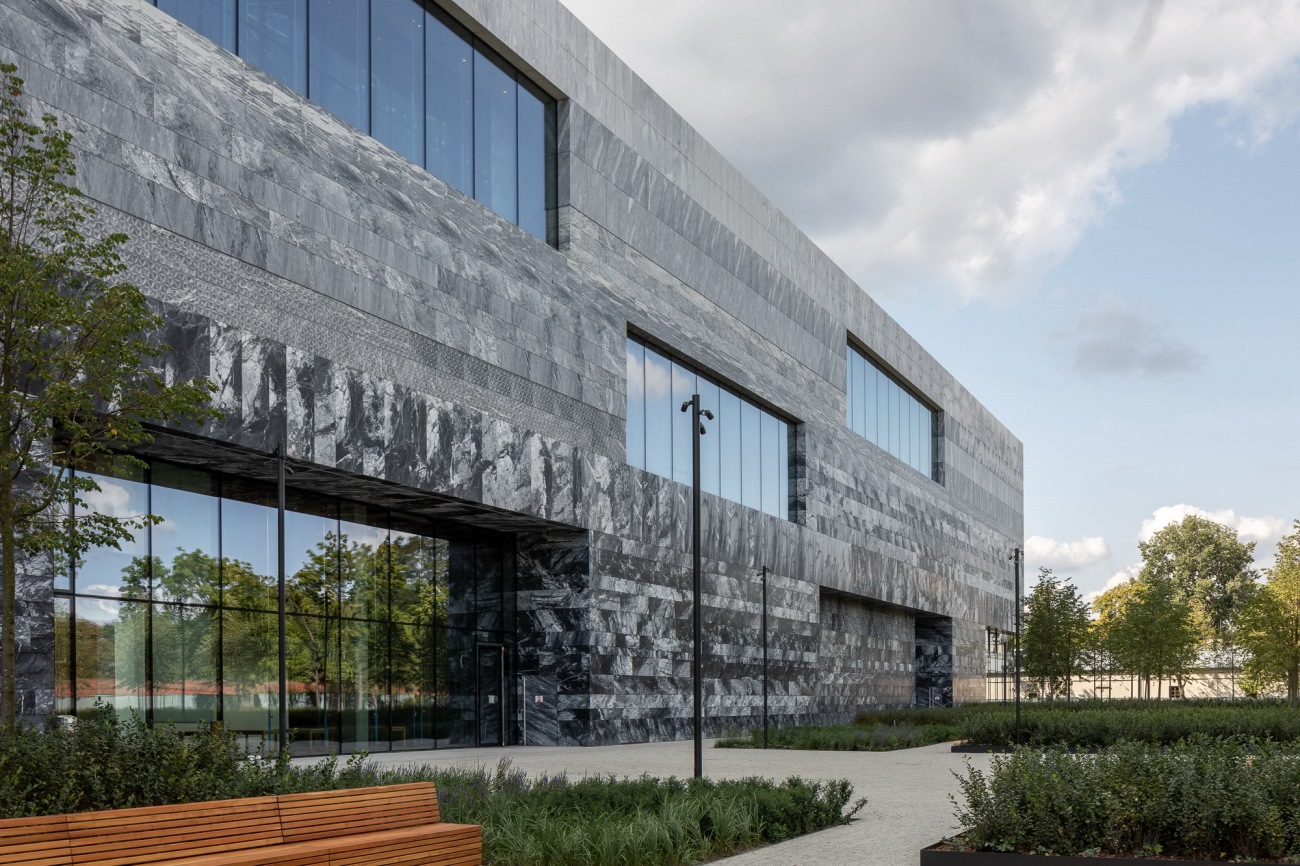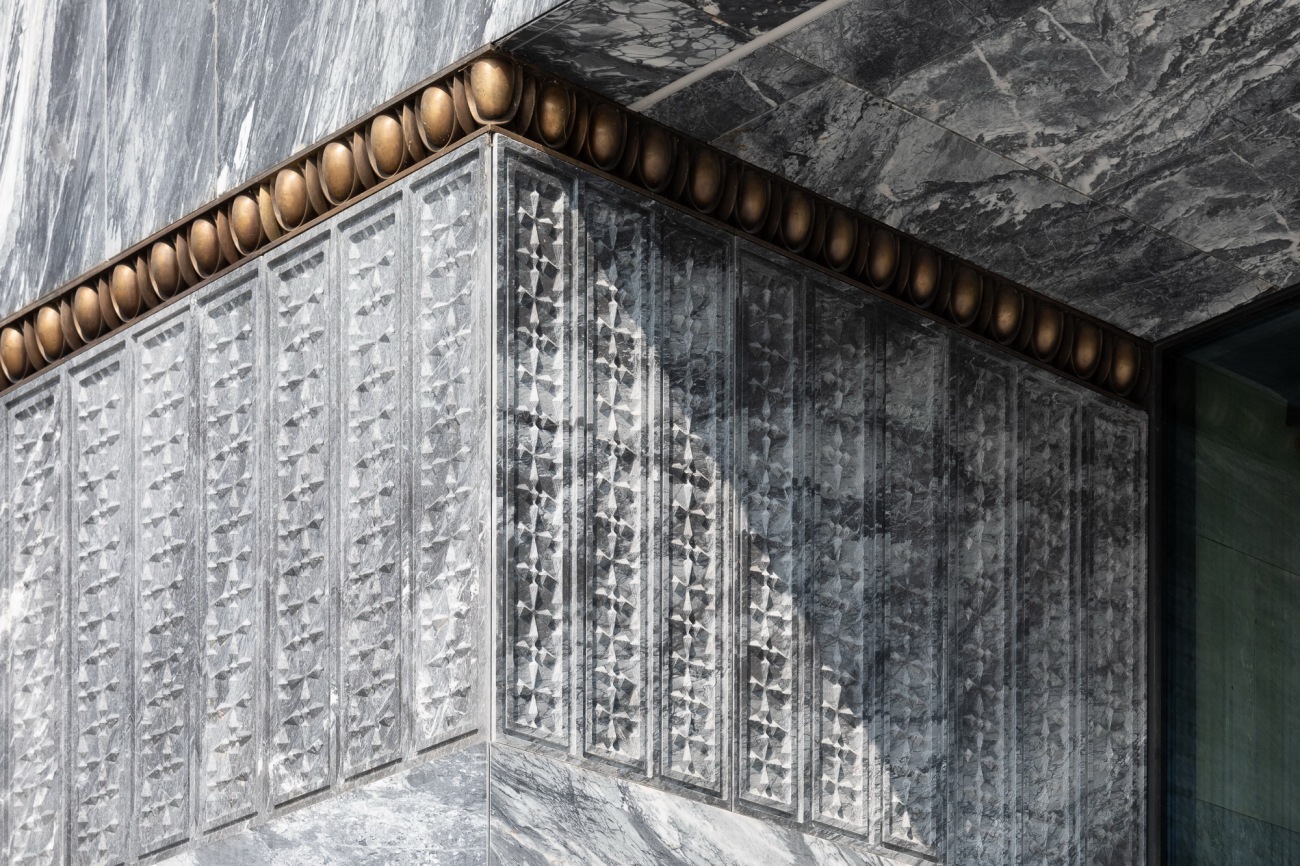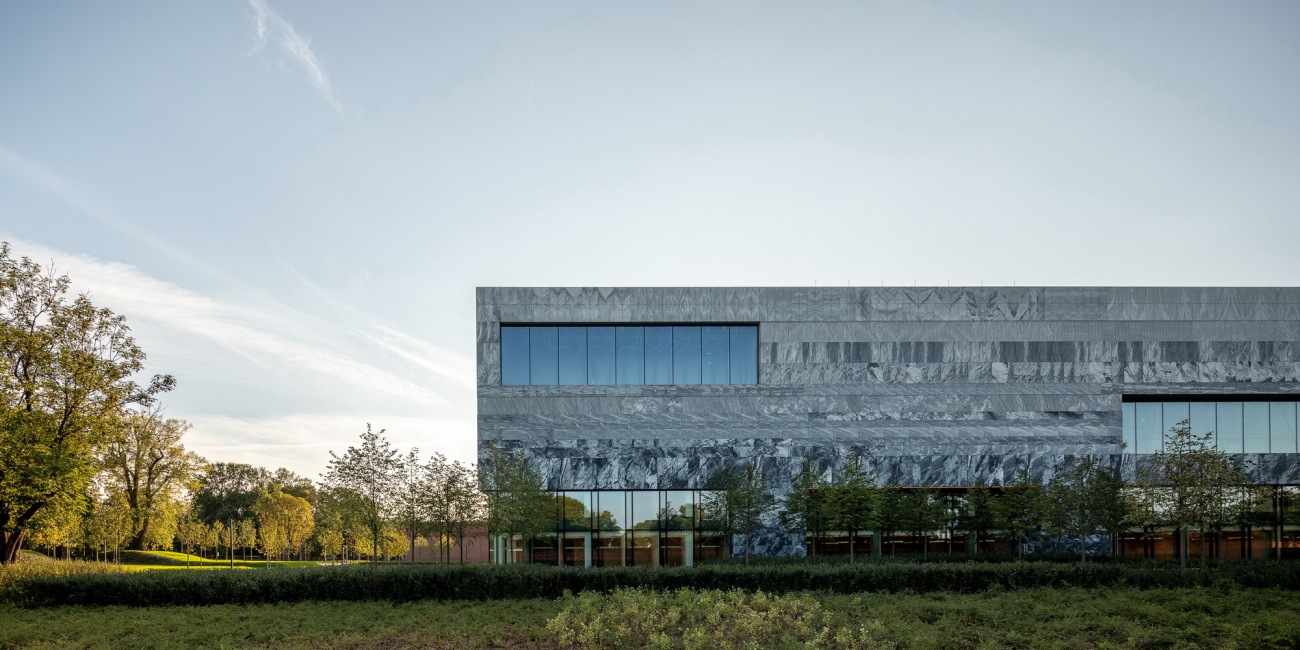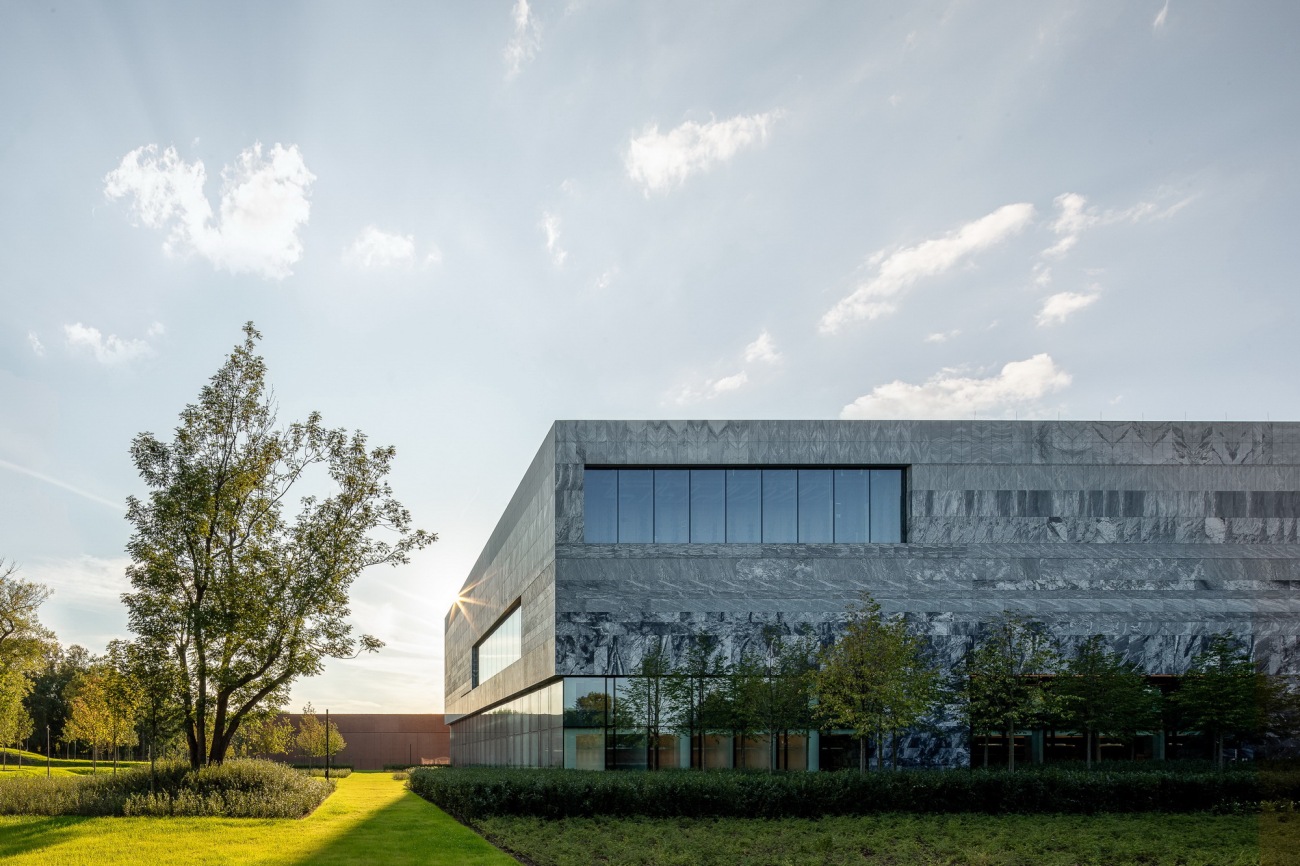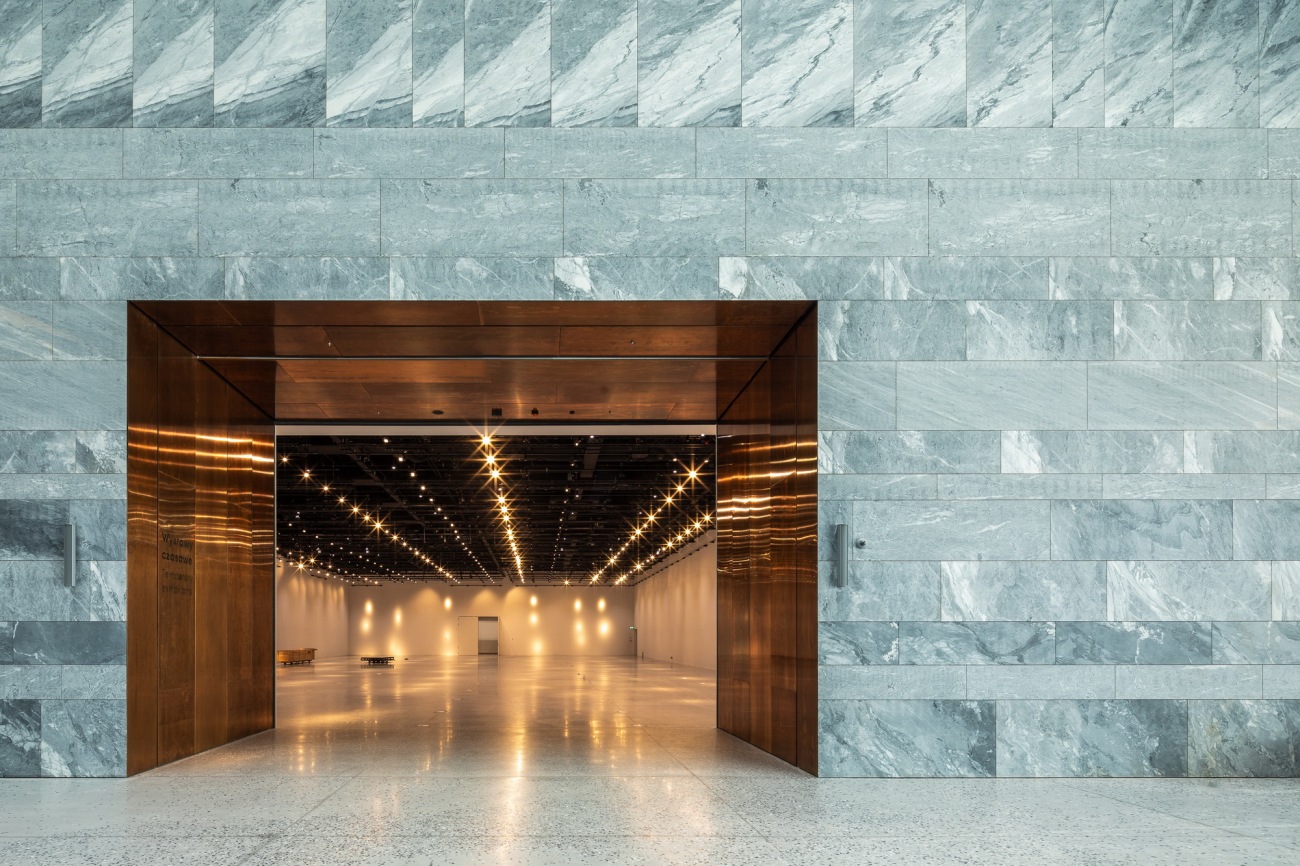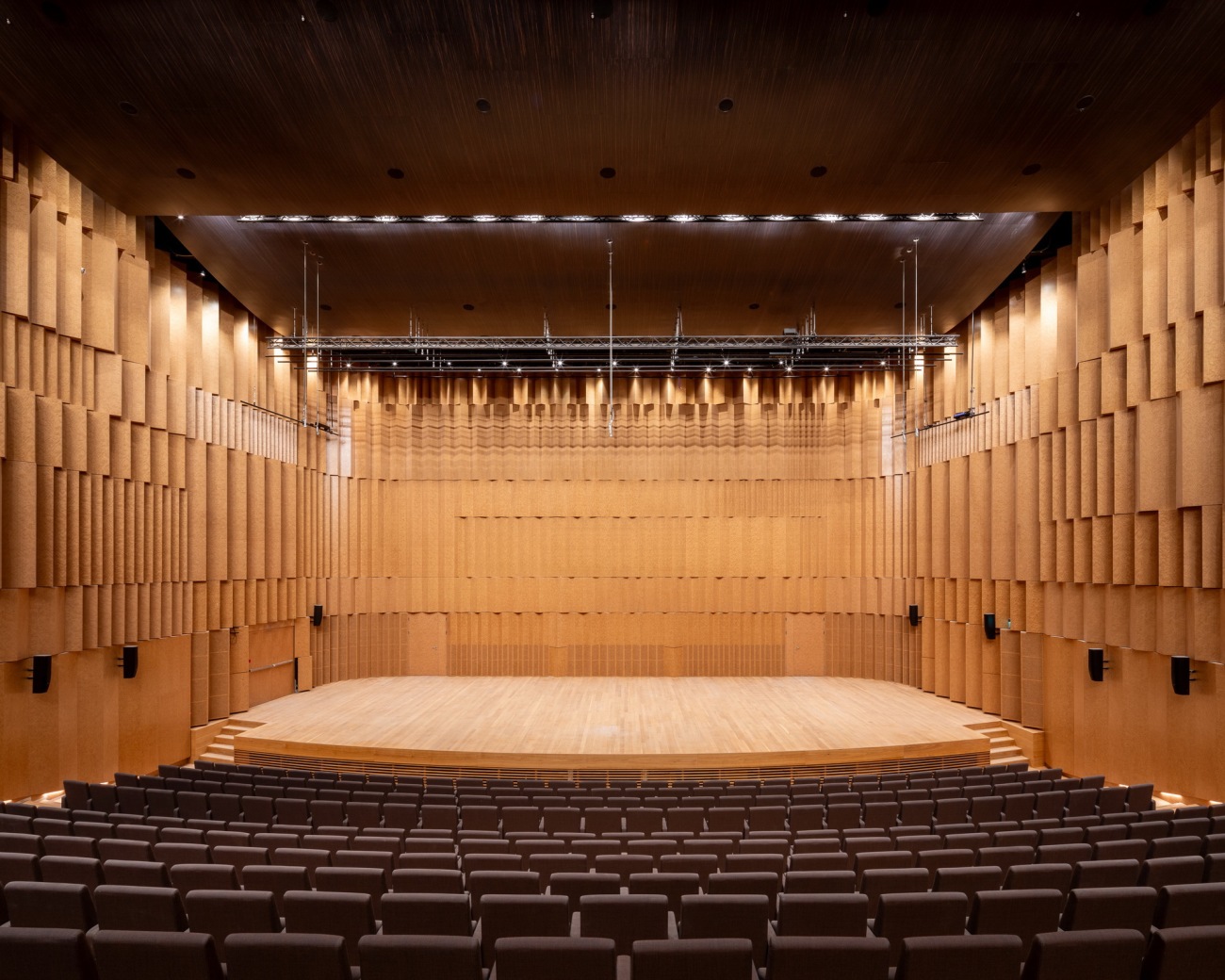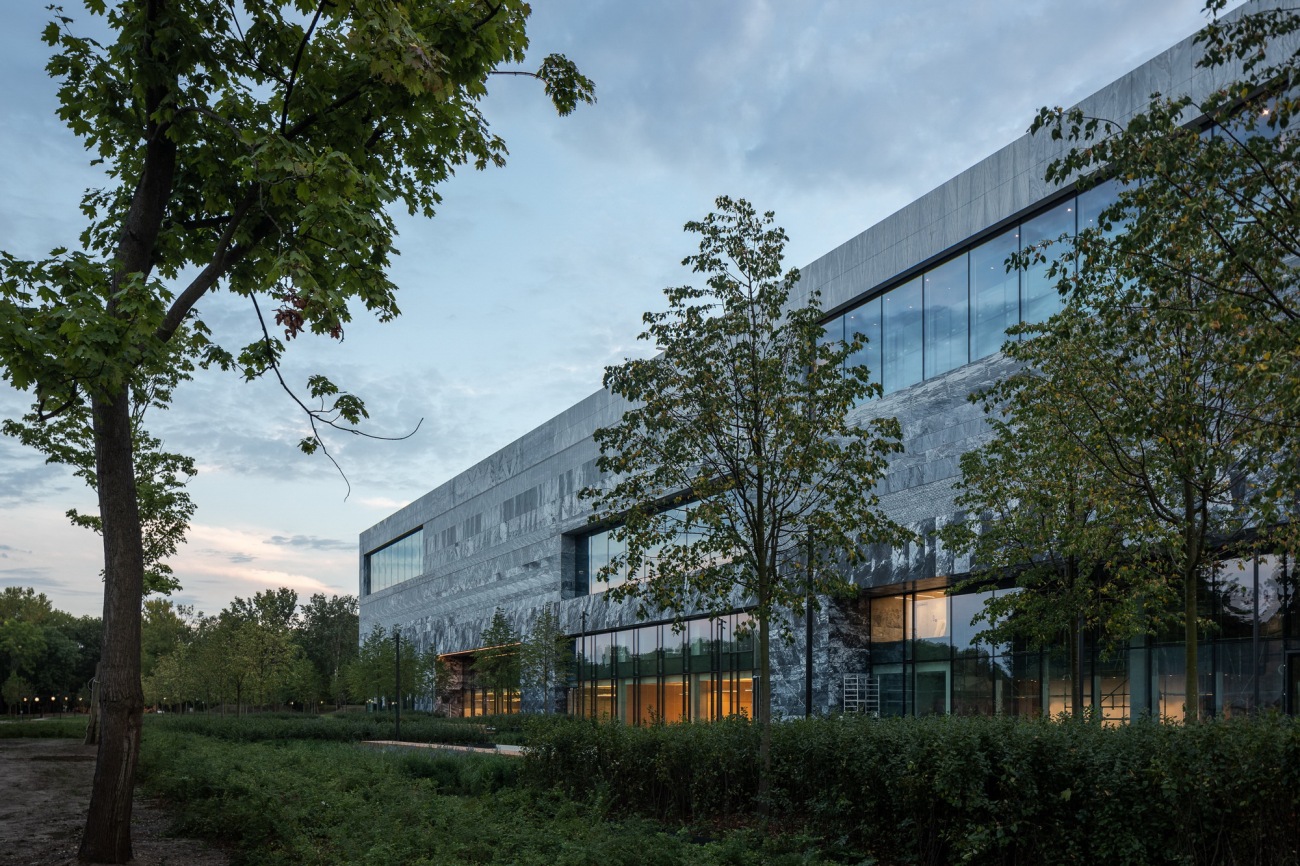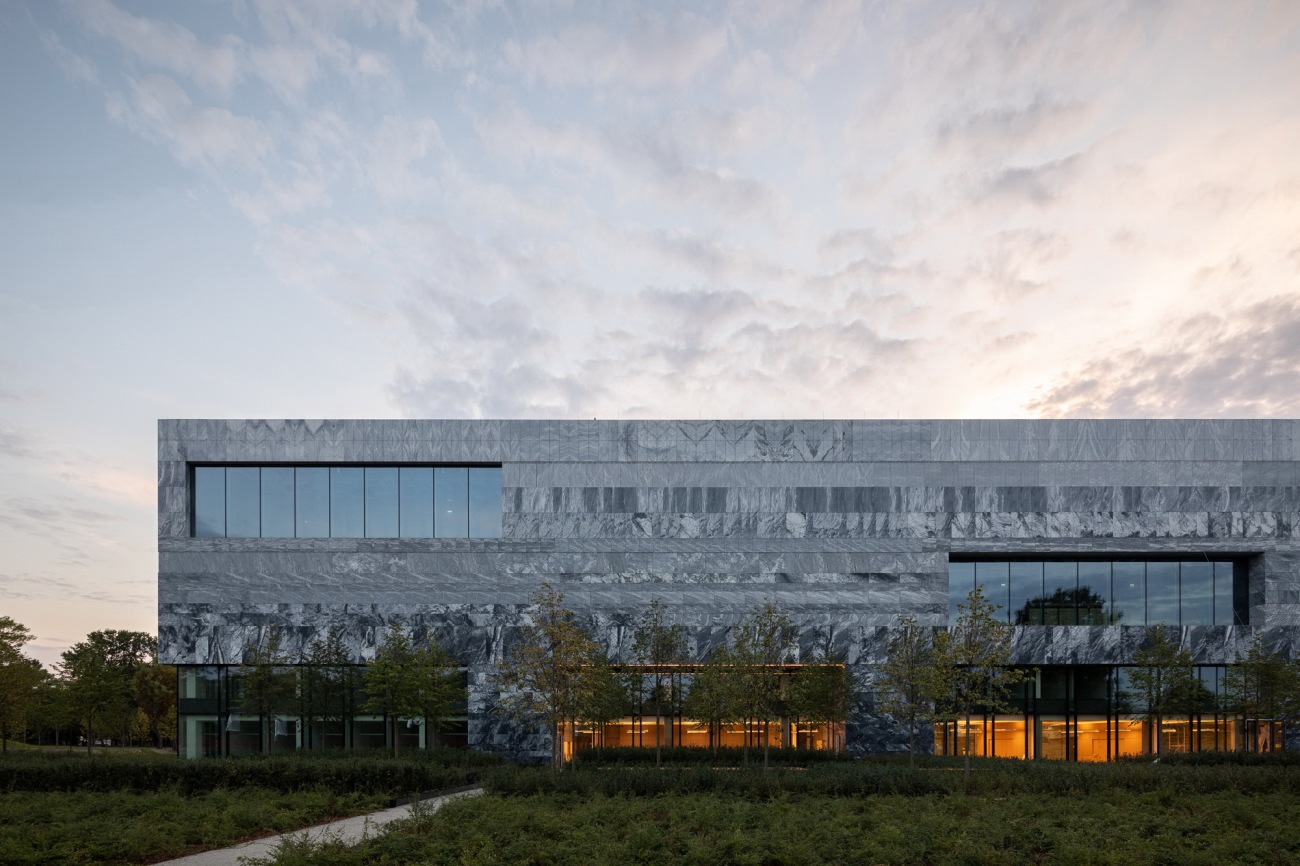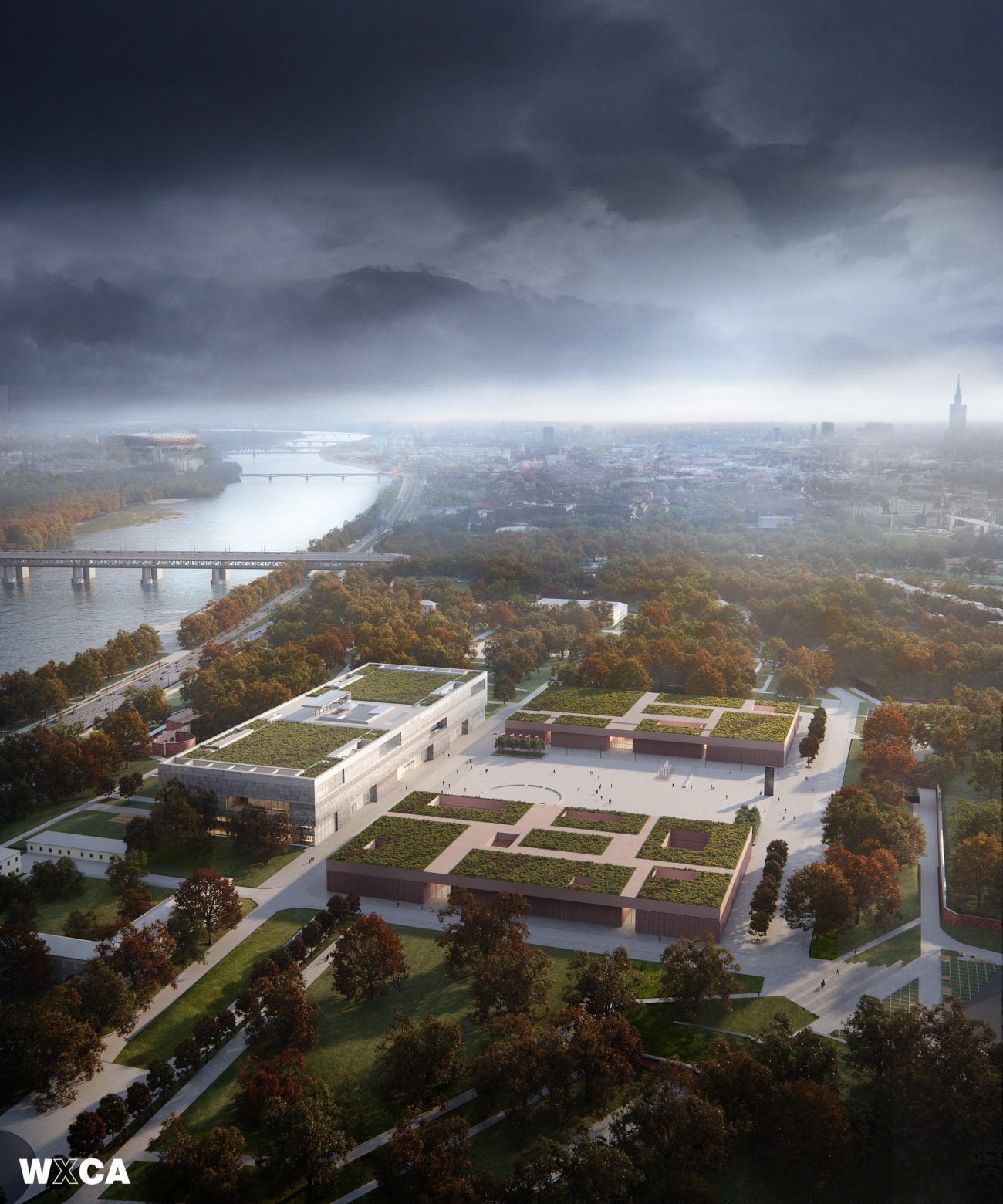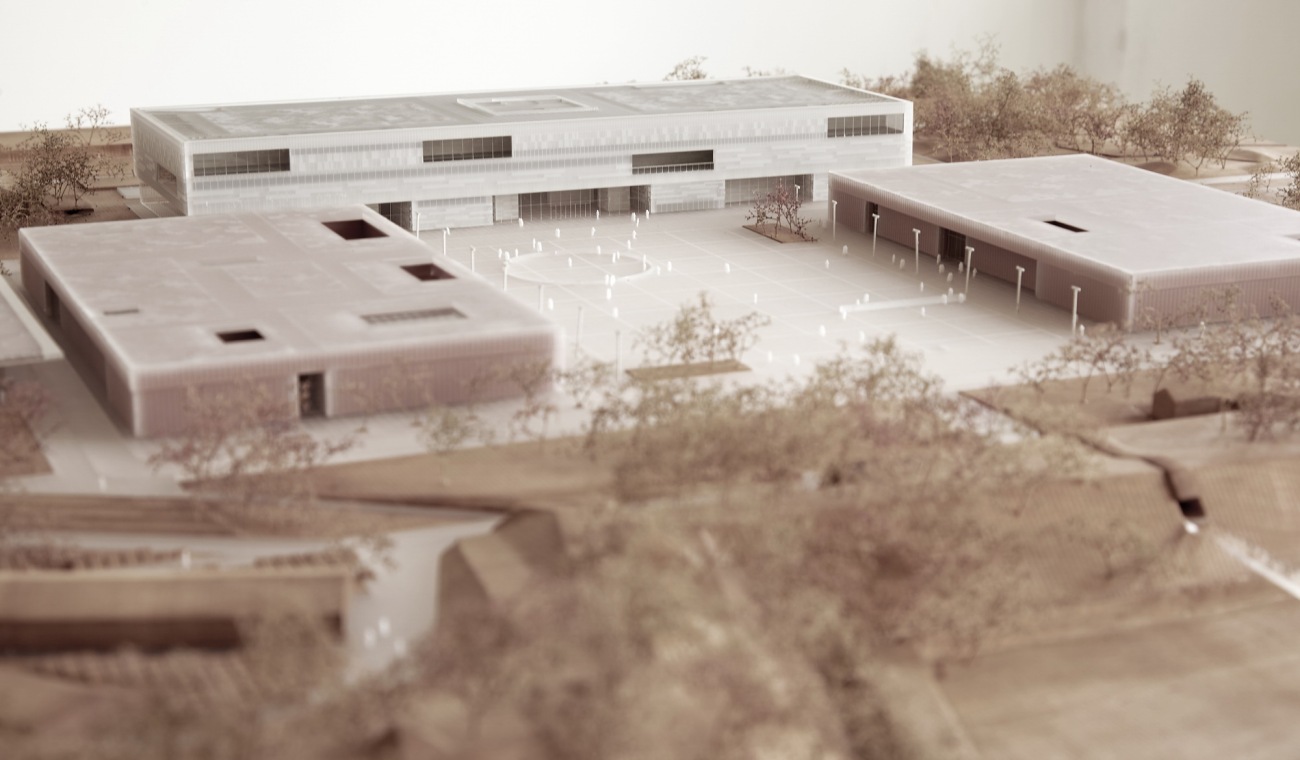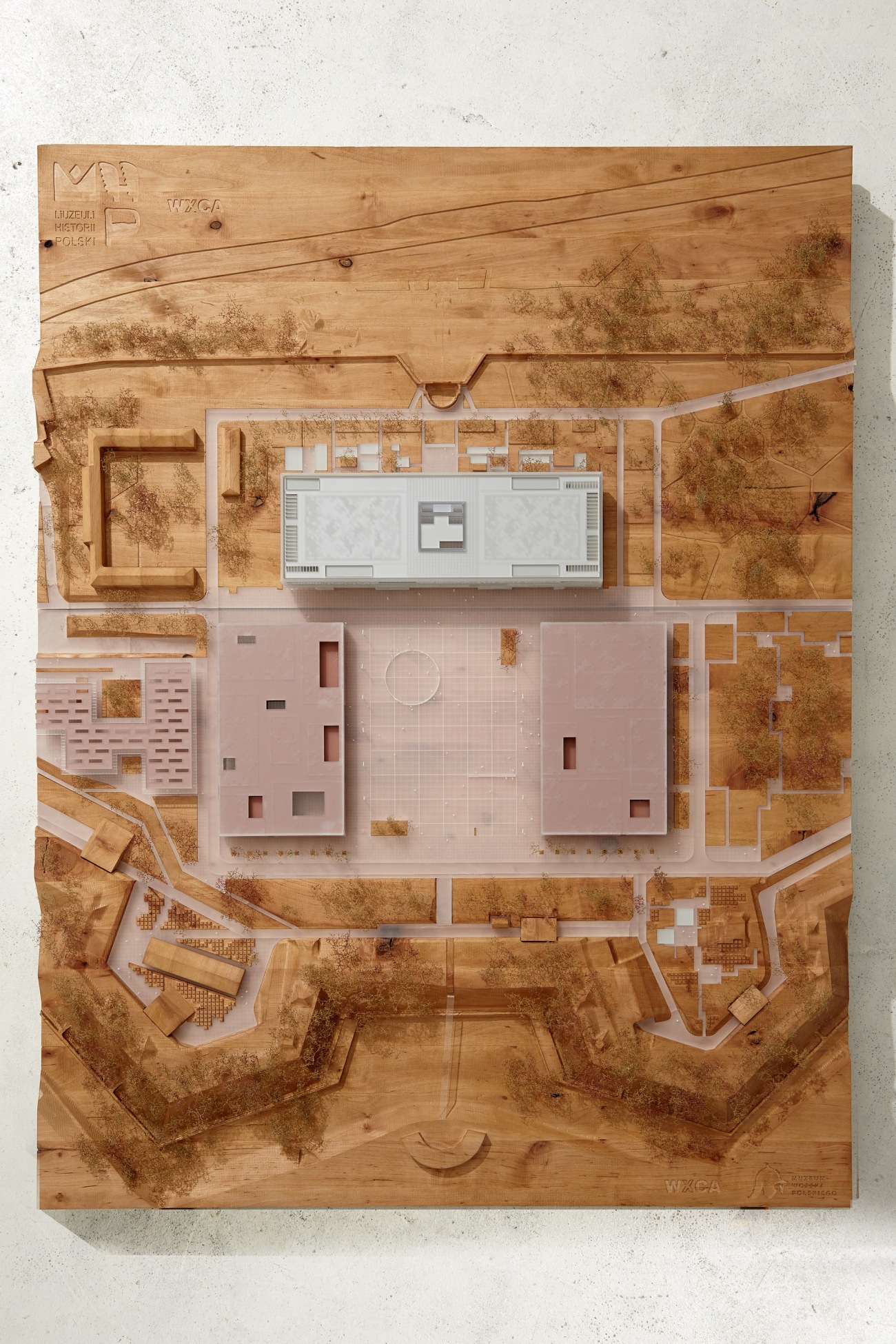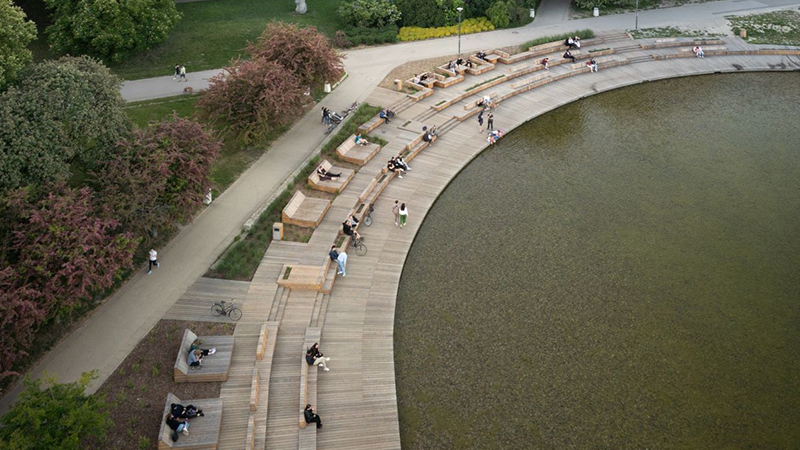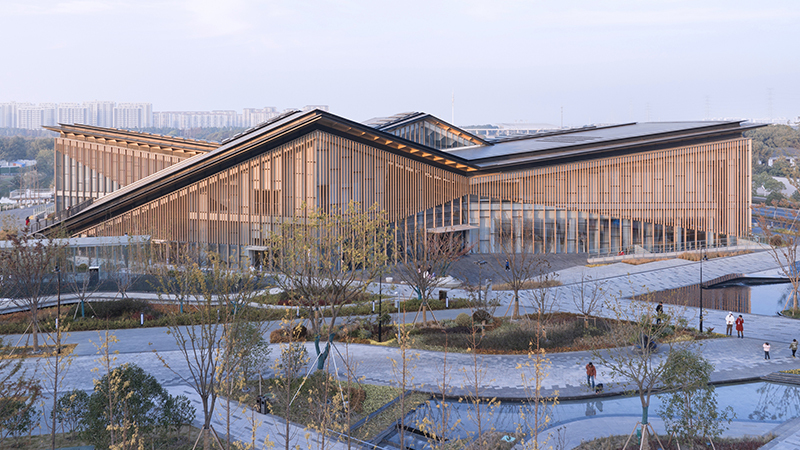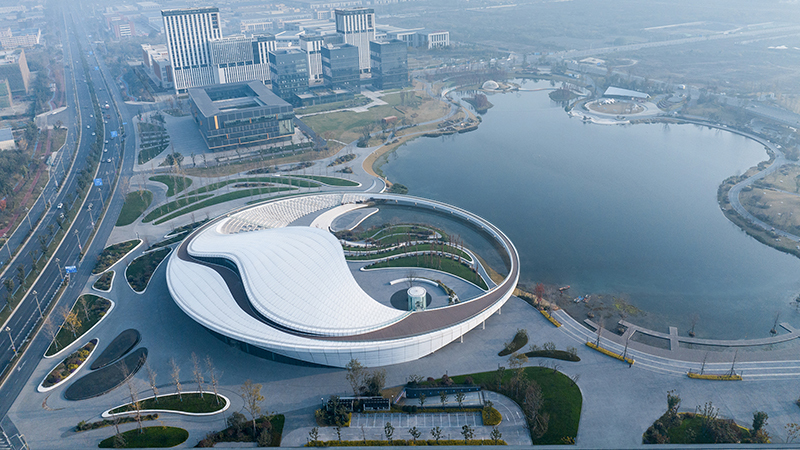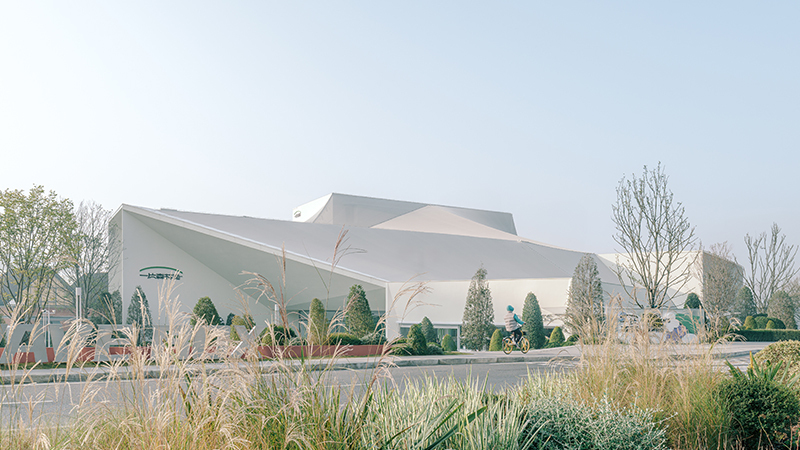波兰历史博物馆的建筑是一个关于历史进程的哲学故事,其中关于发现过去痕迹的叙事语言是一块石头。
The architecture of the Polish History Museum is a philosophical tale about the process of history where the language of the narrative about discovering the traces of the past is a stone.
华沙博物馆城堡 The Warsaw Citadel of Museums
波兰历史博物馆在华沙城堡的建筑设计工作始于2016年。该项目委托给了波兰的建筑设计工作室WXCA,该工作室在2009年赢得了新波兰陆军博物馆总部的国际建筑和城市设计竞赛,该博物馆计划位于19世纪的城堡遗址。因此,与其他欧洲大都市一样,一个博物馆综合体的概念在华沙得以实现 ,博物馆城堡,旨在成为一个面向文化、纪念,以及日常娱乐和休闲的社区建设公共空间。
Work on the architectural design of the Polish History Museum at the Warsaw Citadel began back in 2016. The project was commissioned to Polish architectural design studio WXCA, which in 2009 won the international architecture and urban design competition for the new headquarters of the Polish Army Museum, planned to be located on the 19th century fortress site. Thus, as in other European metropolises, a museum complex concept was brought to life in Warsaw – the Citadel of Museums, conceived to be a community-building public space dedicated to culture, remembrance, as well as everyday recreation and leisure.
在设计中,WXCA的建筑师参考了18世纪的空间布局,该空间曾是波兰皇家步兵卫队的营地。设计师提出了一个城市布局,包括三栋建筑,其中位于中心位置的是波兰历史博物馆,以及两座较低的双子楼,分别位于波兰陆军博物馆的北侧和南侧,封闭了波兰皇家步兵卫队的内部代表性广场。整个综合体还包括一个超过30英亩的市政公园。
In its design, the WXCA architects referred to the 18th century spatial composition of the site where the Polish Royal Foot Guard barracks were based. The designers proposed an urban layout composed of three buildings with the centrally positioned Polish History Museum as well as two lower, twin buildings of the Polish Army Museum closing the inner representative square of the Polish Royal Foot Guards from the north and south sides. A municipal park of over 30 acres is also an integral part of the entire complex.
“华沙城堡在过去200年里一直与城市隔离,对市民关闭。由于这个原因,历史要塞的遗址上保留了广阔的绿地和古老的树林。与波兰历史博物馆和波兰陆军博物馆一起,我们希望开放城堡本身,使其重焕生机,成为一个独特的文化公园,” WXCA建筑师Szczepan Wroński声称道。
“The Warsaw Citadel remained separated off from the City and closed to its residents for the last 200 years. Thanks to this, a vast green area and ancient stand of trees have remained on the site of the historical fortifications. Together with the Polish History Museum and the Polish Army Museum, we want to open up the Citadel itself so that it can be brought back to life and become a unique cultural park,” WXCA architect Szczepan Wroński announced.
写在石头上的历史History Written in Stone
这两个机构的总部在建筑表达方面有所不同,强调它们多样化的特征。它们的个性也在形式和材料的选择中得到体现。波兰历史博物馆的建筑被构想成一个关于历史过程的哲学故事,其中叙述关于发现过去痕迹的语言是石头。
The headquarters of both establishments differ in terms of their architectural expression, which emphasises their diverse profiles. Their individuality was also expressed in the form and selection of materials. The architecture of the Polish History Museum was conceived to be a philosophical tale about the process of history where the language of the narrative about discovering the traces of the past is a stone.
“极简主义、整体式的波兰历史博物馆建筑的形状可能会让人想起一块凿成的石头。它的外墙由不同图案的石板制成,这些石板呈水平带状排列,强调了石头的分层、地层结构。这是地质物质的正确结构,也是考古学的正确结构,是自然、社会和文化的连续过程。我们决定使用大理石,因为它具有独特的图案。每一块大理石板都是不同的、独特的,并且就像历史一样,包含了特殊的、单独的事件,”WXCA 建筑设计工作室的 Paweł Grodzicki 解释道。
“The shape of the minimalist, monolithic Polish History Museum building may be somewhat reminiscent in form of a block of hewn stone. Its façade was finished in different patterned stone slabs that have been arranged in horizontal bands, emphasising the layered, stratigraphic structure of stone. This is the proper structure of geological matter but also of archaeology – natural, social and cultural successive processes. We decided to use marble because of its distinctive pattern. Each of the marble slabs is different, unique, and—just like history—comprises exceptional, individual events,” Paweł Grodzicki from the WXCA Architectural Design Studio explained.
所有的石板都以精心构思的构图排列,有些是以该块后续石板的重复形式,而另一些则是它们的镜像。 建筑师采用了六种不同的石材加工方法,使特定部分的色调和纹理有所不同。 建筑细节以装饰形式引用建筑传统,构成了整个设计的象征性补充。它们可以被解释为考古横截面中不同时期的文物。然而,它们不是直接引用,而是经过几何变换的空间图形,参考了格涅兹诺门浮雕等图案,格涅兹诺门是哥特时期已知的水晶拱顶(例如圣母玛利亚升天大教堂)格但斯克)、克拉科夫圣西吉斯蒙德教堂的装饰,或者卡托维兹现代主义斯波代克竞技场综合体的动机。
All the slabs were arranged in a carefully conceived composition, some in the form of repetitions of subsequent slabs of the block, and others as their mirror image. The architects applied six different methods of working the stone, which allowed specific sections to differ in terms of their tonality and texture. The architectonic detail in the form of ornamentation with quotations from architectural tradition constitutes a symbolic complement to the whole design. They can be interpreted as artefacts from different periods in an archaeological cross-section. They are not direct quotes, however, but spatial graphics subject to geometric transformation, making references to such patterns as the relief from the Gniezno Doors, the crystal vault known from the Gothic period (e.g., the Basilica of the Assumption of the Blessed Virgin Mary in Gdansk), the decorations of St Sigismund’s Chapel in Krakow, or the motive from the modernist Spodek arena complex in Katowice.
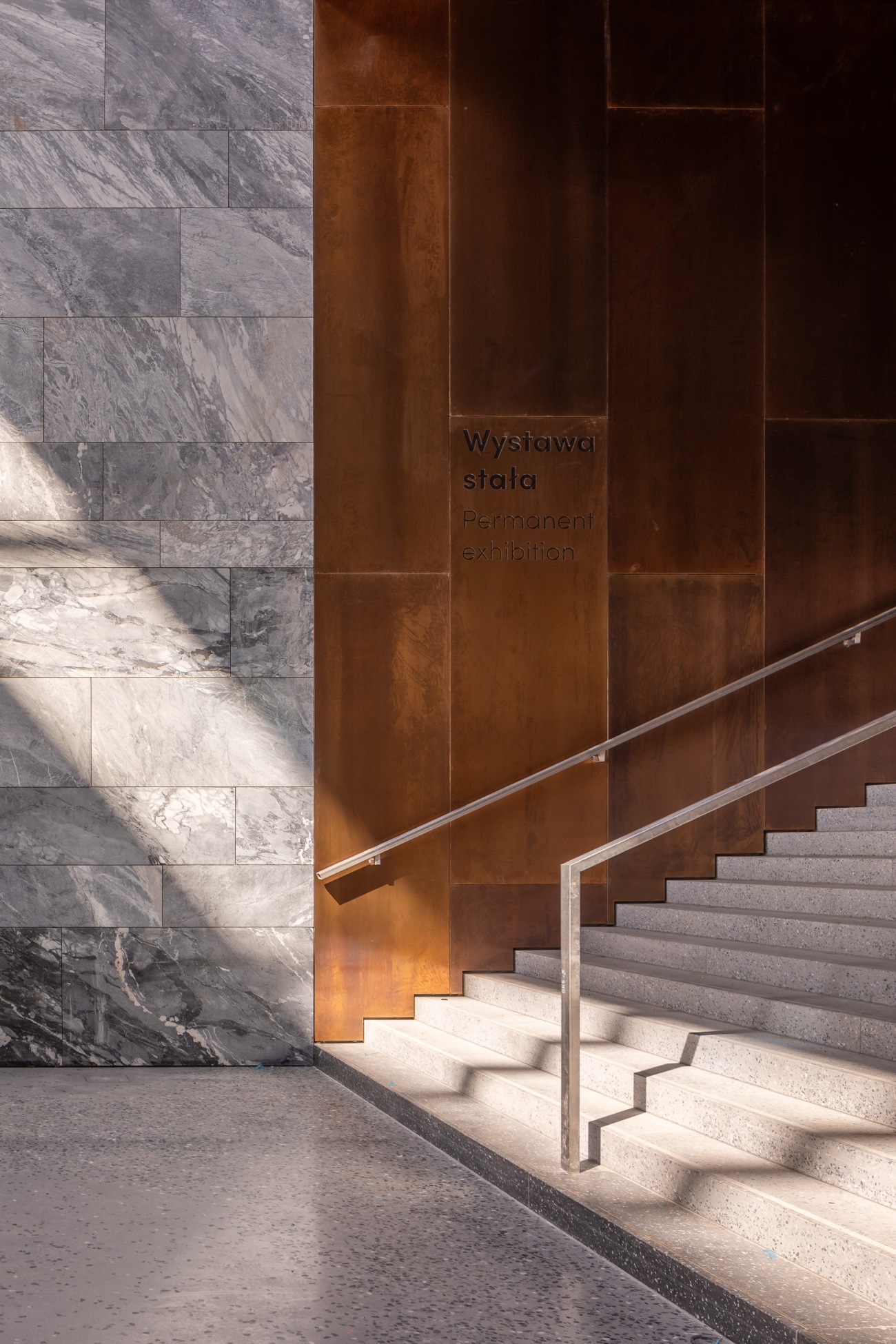 | 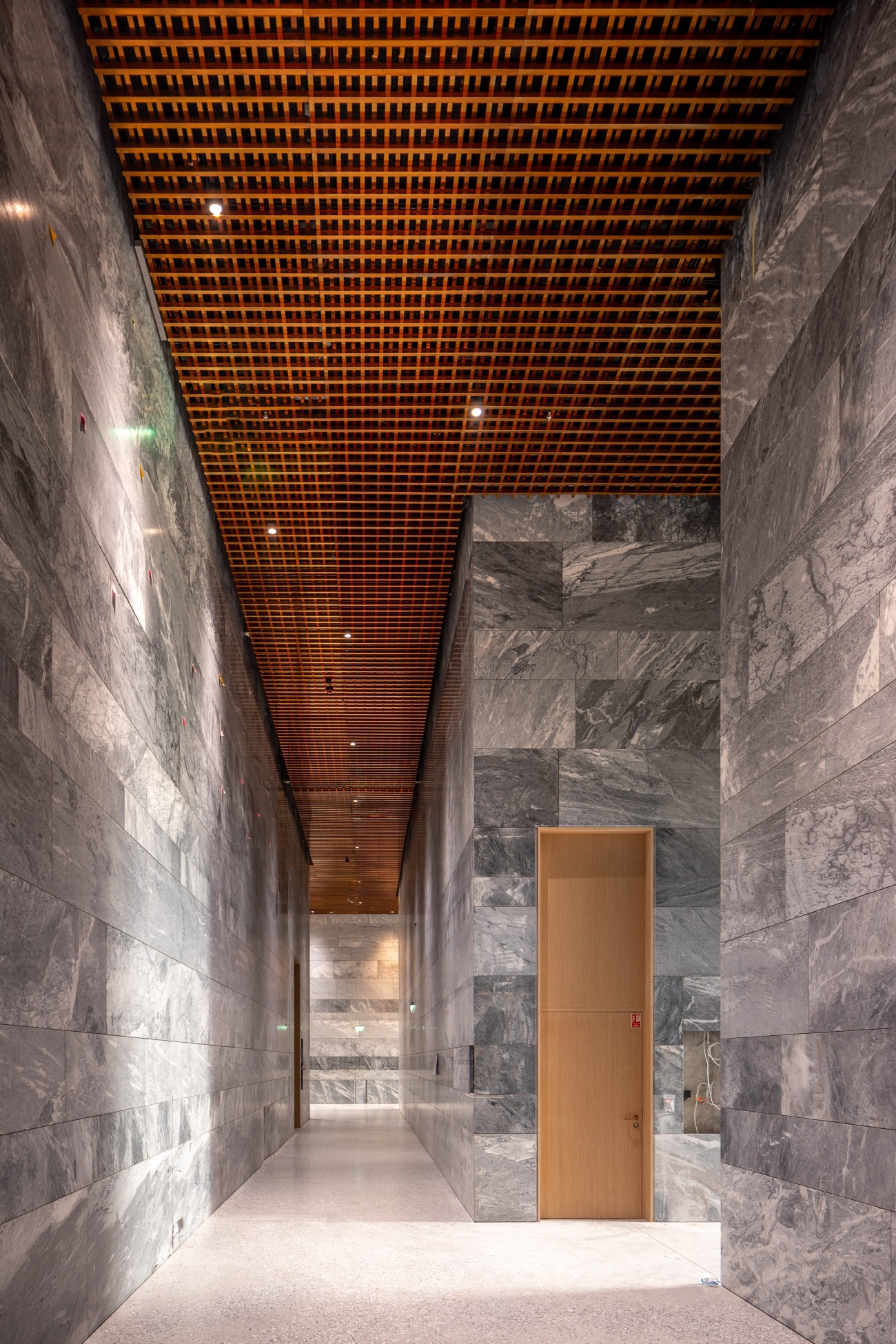 |  |
生机勃勃的文化中心A Living Cultural Centre
波兰历史博物馆的建筑面积将近45,000平方米,每年预计可接待大约50万名游客。除了陈列空间和文物的存储和保护设施之外,博物馆还将拥有各种文化设施,包括一个可容纳高达600名观众的音乐厅、一个电影和剧院大厅、图书馆、会议和学习套房、餐饮点,以及一个提供华沙全景的观景平台。
The Polish History Museum will have a surface area of almost 45,000 square metres and will be ready to receive approximately 500,000 visitors annually. Apart from the expositional space and the facilities for the storage and conservation of artefacts, it will also house various cultural facilities, including a concert hall seating up to 600 guests, a cinema and theatre hall, a library, conference and learning suites, catering points, as well as a viewing platform offering panoramic views of Warsaw.
“当代博物馆不仅仅是展品。 事实上,它们是一个全面的议程,具有不同的、互补的但又独立的职能。 事实上,波兰历史博物馆的永久和临时展览空间将占整个表面积的不到五分之一,其余部分包括公共和技术设施。 博物馆的整个底层采用开放式空间规划,没有简单、线性的内部体验路径。 人们可以多次参观博物馆,每次都会发现不同的东西,同时参加在那里举行的各种活动。 内部规划的构思是为了让人们能够在不同的功能块之间自由地漫游和蜿蜒,就像在一个凿出的整体块中一样,”WXCA 建筑师 Krzysztof Budzisz 说道。
“Contemporary museums are not just about the exhibits. They are, in fact, a comprehensive agenda of different and complementing but also independent functions. The permanent and temporary exhibition spaces at the Polish History Museum will, in fact, constitute less than one fifth of the entire surface area, the rest comprises public and technical facilities. The whole ground floor of the museum has assumed an open space plan with no simple, linear path of experiencing the interiors. One can visit the museum multiple times and discover something different each time while taking part in various events that will be held there. The plan of the interior was conceived to give the freedom to roam and meander between the various functional blocks, just like in a chiselled-out monolithic block,” said WXCA architect Krzysztof Budzisz.
波兰历史博物馆连同上个月新开放的波兰陆军博物馆以及位于华沙城堡遗址上的 X 馆和卡廷博物馆将成为欧洲最大、最现代化的博物馆综合体之一。 第一阶段的工程,包括波兰历史博物馆和波兰陆军博物馆南楼,包括完成一个带有地下停车场的城市广场和维斯沃斯特拉达一侧的新入口大门。 很快将有一座人行桥将城堡区与 Wojska Polskiego 大道和 Żoliborz 区连接起来。 后期阶段将包括完成波兰陆军博物馆北楼、露天展览的屋顶以及防御工事历史元素的修复。
The Polish History Museum, together with the newly opened last month Polish Army Museum as well as the X Pavilion and the Katyn Museum already located on site of the Warsaw Citadel will become one of the largest and most modern museum complexes in Europe. The first stage of the works, together with the Polish History Museum and the South Building of the Polish Army Museum, included the completion of an urban square with an underground parking and a new entrance gate from the Wisłostrada side. There will soon be a footbridge connecting the area of the Citadel with the Wojska Polskiego Avenue and the district of Żoliborz. Later stages will include the completion of the North Building of the Polish Army Museum, roofing over the open-air exhibition, and the restoration of the historic elements of the fortifications.
▽鸟瞰图,Aerial View
▽模型展示,Model display
Project name: Polish History Museum
Company name: WXCA
Website: www.wxca.pl
Contact e-mail: b.jankowski@wxca.pl
Project location: Warsaw, Poland
Completion Year: 2023
Building area (m²): 45 000 m2
Other participants:
Team WXCA: Szczepan Wroński, Paweł Grodzicki, Krzysztof Budzisz, Marta Sękulska-Wrońska, Katarzyna Billik, Rafał Boguszewski, Kamil Cedzyński, Anna Dobek, Małgorzata Gilarska, Beata Głaz, Marcin Jurusik, Michał Kasprzyk, Ludwik Kaizerbrecht, Marcin Kruk, Paulina Kucharska, Michał Lipiec, Anna Majewska, Krzysztof Marciszewski, Adam Mierzwa, Mariusz Niemiec, Magdalena Nowak, Magdalena Julianna Nowak, Barbara Płonczyńska, Zuzanna Rosińska, Michał Staniszewski, Łukasz Szczepanowicz, Kajetan Szostok, Krystian Tomczyk, Paweł Wolanin, Michał Żurek, Paweł Słupski, Michał Kalinowski
Another partners: WSP Polska, PAK Pracownia Akustyczna Kozłowski, Qlab, Biuro Techniczne Tuscher, RS Architektura Krajobrazu
Photo credits: WXCA
更新日期:2023-10-30 15:41:54
非常感谢 WXCA 带来的精彩项目, 查阅更多Appreciations towards WXCA for sharing wonderful work on hhlloo. Click to see more works!
